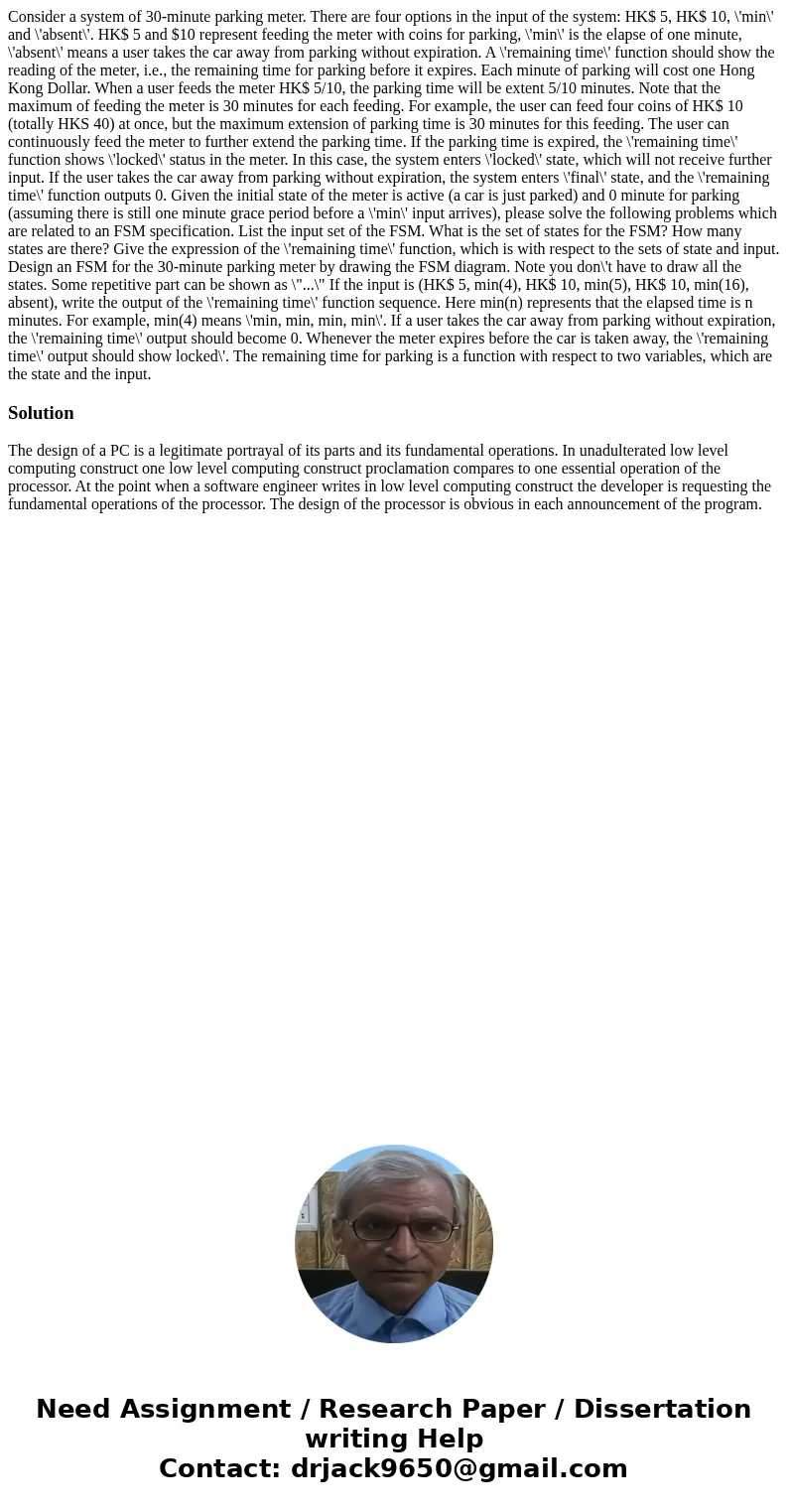Consider a system of 30minute parking meter There are four o
Consider a system of 30-minute parking meter. There are four options in the input of the system: HK$ 5, HK$ 10, \'min\' and \'absent\'. HK$ 5 and $10 represent feeding the meter with coins for parking, \'min\' is the elapse of one minute, \'absent\' means a user takes the car away from parking without expiration. A \'remaining time\' function should show the reading of the meter, i.e., the remaining time for parking before it expires. Each minute of parking will cost one Hong Kong Dollar. When a user feeds the meter HK$ 5/10, the parking time will be extent 5/10 minutes. Note that the maximum of feeding the meter is 30 minutes for each feeding. For example, the user can feed four coins of HK$ 10 (totally HKS 40) at once, but the maximum extension of parking time is 30 minutes for this feeding. The user can continuously feed the meter to further extend the parking time. If the parking time is expired, the \'remaining time\' function shows \'locked\' status in the meter. In this case, the system enters \'locked\' state, which will not receive further input. If the user takes the car away from parking without expiration, the system enters \'final\' state, and the \'remaining time\' function outputs 0. Given the initial state of the meter is active (a car is just parked) and 0 minute for parking (assuming there is still one minute grace period before a \'min\' input arrives), please solve the following problems which are related to an FSM specification. List the input set of the FSM. What is the set of states for the FSM? How many states are there? Give the expression of the \'remaining time\' function, which is with respect to the sets of state and input. Design an FSM for the 30-minute parking meter by drawing the FSM diagram. Note you don\'t have to draw all the states. Some repetitive part can be shown as \"...\" If the input is (HK$ 5, min(4), HK$ 10, min(5), HK$ 10, min(16), absent), write the output of the \'remaining time\' function sequence. Here min(n) represents that the elapsed time is n minutes. For example, min(4) means \'min, min, min, min\'. If a user takes the car away from parking without expiration, the \'remaining time\' output should become 0. Whenever the meter expires before the car is taken away, the \'remaining time\' output should show locked\'. The remaining time for parking is a function with respect to two variables, which are the state and the input.
Solution
The design of a PC is a legitimate portrayal of its parts and its fundamental operations. In unadulterated low level computing construct one low level computing construct proclamation compares to one essential operation of the processor. At the point when a software engineer writes in low level computing construct the developer is requesting the fundamental operations of the processor. The design of the processor is obvious in each announcement of the program.

 Homework Sourse
Homework Sourse